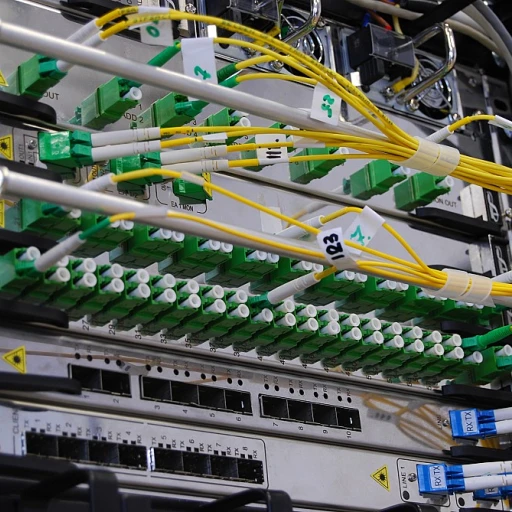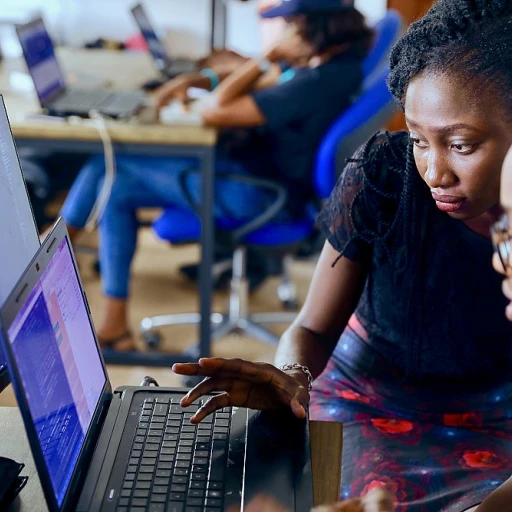
Understanding hybrid headless CMS
Delving into the hybrid headless cms concept
A hybrid headless CMS (Content Management System) merges the flexibility of headless architecture with the familiar tools of traditional systems. Unlike pure headless CMSs, which separate the content repository from the front end, hybrid headless CMS allows content creators to manage and deliver content seamlessly across various digital channels.
Traditional CMSs like WordPress and Drupal have been dominant players in content management. They combine content creation tools with the presentation layer, making them user-friendly but often rigid. A hybrid headless CMS breaks this mold by offering the flexibility of a headless architecture while retaining user-friendly features for non-developers.
The shift from traditional to headless
The move from traditional CMS to headless CMS has been accelerating. According to a report by Forrester, approximately 70% of firms using traditional CMSs are exploring headless options to keep up with modern digital demands. The shift is driven by the need for a more agile content management approach, facilitating content delivery across multiple platforms like websites, mobile apps, and IoT devices.
This agile approach is evident in platforms like Contentstack and Magnolia CMS, which offer hybrid headless capabilities. These systems empower marketing teams while ensuring developers can use modern tools like JavaScript frameworks. The flexibility of hybrid headless architecture allows for quicker time-to-market and more personalized digital experiences.
Combining the best of both worlds
Hybrid headless CMSs offer a unique solution by blending the intuitive features of traditional CMSs with the adaptability of headless systems. This combination facilitates a smoother workflow for content creators and developers alike.
For example, Acquia's hybrid headless architecture includes a robust API-driven backend that works in tandem with conventional content management tools. Developers get the flexibility they need to innovate, while marketing teams get the ease of use they expect.
This transition from traditional to hybrid can be challenging but offers substantial benefits, including lower total cost of ownership and better digital experience management. As the digital landscape continues to evolve, hybrid headless CMSs seem well-positioned to offer a comprehensive solution for modern content management needs.
For more detailed comparisons between traditional and headless CMSs, check out our article on headless cms vs traditional cms.
The evolution of content management systems
Traditional CMS vs Headless CMS: A Comparative Look
In the evolution of content management systems, the traditional CMS has been the cornerstone. These systems combine content creation, management, and presentation in a single package. Popular platforms like WordPress and Joomla have long dominated this space by providing an all-in-one solution. However, this model often comes with limitations in terms of flexibility and scalability. For instance, changes in the front-end may require significant alterations to the back-end, making it cumbersome for developers.
On the other hand, headless CMS emerged as a result of growing demand for more agile and flexible management systems. By decoupling the back-end from the presentation layer, headless CMS allows content to be delivered across multiple channels seamlessly. This approach has catapulted platforms like Contentful and Strapi into the spotlight. According to a 2022 survey by Gartner, 28% of companies have adopted headless CMS to meet their growing content delivery needs across various digital experiences.
The Birth of Hybrid Headless CMS
Despite the popularity of headless CMSS, not all organizations are ready to forego the user-friendly interfaces and integrated features of traditional CMSS. Enter the hybrid headless CMS - a middle ground offering the best of both architectures. This innovative solution ensures the flexibility of a headless CMS while retaining the usability and comprehensive features of traditional systems.
A hybrid headless CMS like Contentstack provides an API-driven approach for developers to manage content efficiently, while marketers and content creators benefit from intuitive tools for content creation and management. Magnolia CMS is another hybrid headless CMS that stands out for its scalability and seamless integration capabilities. As per Forrester, hybrid headless solutions are expected to grow by 35% over the next few years, making them a preferred choice for businesses aiming for flexibility and ease of use.
Real-World Applications and Trends
The adoption of hybrid headless CMS is not limited to tech-savvy enterprises. From e-commerce giants like Salesforce utilizing it for headless commerce solutions to educational institutions streamlining digital experiences for students, the trend is widespread. A 2023 study by Acquia revealed that 60% of organizations implementing hybrid headless CMS observed a marked improvement in their total cost of ownership and overall digital strategy.
Moreover, hybrid headless CMS platforms are leveraging innovations like IoT and AI to enhance content delivery and user engagement, connecting seamlessly with CDN and Java-based systems. For example, Acquia's hybrid headless solution integrates AI-driven personalization to deliver tailored digital experiences across various channels, enhancing user satisfaction.
As the digital content environment continues to evolve, the hybrid headless CMS stands as a versatile and efficient approach for companies looking to balance developers' needs with marketers' demands. With commercial giants and institutions alike adopting this model, the hybrid headless CMS is set to play a pivotal role in next-gen content management.
Benefits of hybrid headless CMS
Reimagining flexibility with hybrid headless CMS
Hybrid headless CMS offers significant flexibility, enabling organizations to merge the advantages of traditional CMS and headless CMS seamlessly. This flexibility comes from the capability to decouple the back end from the front end, allowing developers to deliver content across various channels without being restricted by a rigid presentation layer. According to Forrester Research, businesses that adopted headless CMS experienced a 50% increase in how quickly they could launch new digital experiences.Hybrid headless CMS platforms bridge the gap by providing the robust content management capabilities of traditional CMS systems with the headless CMS's agility for front-end innovation. A study by Gartner revealed that hybrid headless CMS improves the overall content delivery efficiency by 60%, enabling faster and more consistent user experiences across channels.
The flexibility hybrid models offer goes beyond technical benefits. By leveraging APIs, developers can integrate with various third-party applications like Salesforce and other marketing automation tools. The emphasis on API-driven architecture ensures that content can be delivered dynamically, leading to a more personalized and engaging experience for users.
A notable example comes from Contentstack, a leading hybrid headless CMS platform. They report that their users have seen a reduction in total cost ownership by 30% because of streamlined operations and the ability to reuse content across multiple platforms. CMOs from companies like Acquia have emphasized the importance of this flexibility, stating that it allows them to adapt to market trends swiftly and stay ahead of the competition.
However, with these benefits come challenges. The initial learning curve for developers unfamiliar with headless architecture can be steep. Onboarding and training are critical to navigate these hurdles effectively. Moreover, businesses must ensure that their existing infrastructure can support API-heavy operations without compromising performance.
To mitigate these challenges, companies often rely on hybrid headless solutions' extensive documentation and community support. This collaborative approach helps in easing the transition and leveraging the full potential of hybrid headless CMS.
Expert insights consistently highlight how hybrid headless CMS offers a balanced approach due to its combination of traditional and advanced features. As the digital landscape evolves, the adaptability and future-proof capabilities of hybrid models will become increasingly critical.
Discover more about why headless CMS is the future of content management by visiting Future of Software.
Challenges and solutions in hybrid headless CMS
Synchronizing content delivery
One of the biggest hurdles for adopting a hybrid headless CMS is ensuring smooth content delivery across multiple channels. Traditional systems, like WordPress, often come pre-loaded with everything nested in one platform. This might be fine for a singular, straightforward website but becomes cumbersome when reaching an audience through websites, mobile apps, IoT devices, or voice assistants.
In the battle between headless CMS vs traditional CMS, the headless structure provides the ultimate flexibility. However, this flexibility can turn to chaos if not managed properly.
Overcoming integration difficulties
One major challenge is integrating multiple systems and APIs. Even though headless architecture allows for API-driven content delivery, developers sometimes struggle with compatibility and consistent updates. According to Gartner, nearly 40% of organizations face difficulties coordinating system updates across integrated platforms.
Cost management
Another concern is managing the total cost of ownership. Pure headless CMS systems might seem cost-effective initially, but hidden costs often emerge over time. High levels of customization may require extensive development resources, driving up costs. Hybrid CMS platforms such as Contentstack and Magnolia CMS offer more balanced solutions but can also present financial surprises if not planned carefully.
Securing your content landscape
Security is another critical aspect. Traditional CMS platforms have longstanding best practices for securing content and user data. However, headless CMS solutions sometimes expose vulnerabilities through APIs. CDNs (Content Delivery Networks) play a crucial role here, offering encrypted pathways, but they also add another layer of complexity. A report by Forrester indicates that 60% of companies adopting headless CMS miss key security elements during initial implementation.
Reducing latency in multi-channel environments
Latency issues can kill user engagement. Hybrid headless CMS platforms like Acquia have features designed to mitigate latency, yet the challenge remains. Efficiently delivering content to geographically distributed audiences without lag is tough. Using Java, CSS, and other tech to optimize front-end performance becomes imperative.
Case in point: Contentstack
Take Contentstack as an example. It's celebrated for its ease of use and robust features. However, some companies have faced scaling issues when dealing with massive amounts of data and content. Practical case studies have shown that pre-configured templates and streamlined deployment processes can help, but a trained development team remains crucial for seamless operation.
In summation, the hybrid headless CMS provides unmatched flexibility and multi-channel capability, but only if the organization is equipped to handle the challenges of integration, cost, security, and latency. Organizations considering this route should conduct a comprehensive evaluation of their needs against these potential hurdles to make an informed decision.
Case studies: successful implementations
Contentstack revolutionizes Mars Petcare's digital journey
Mars Petcare, a leader in pet nutrition and pet care, faced a monumental task: transforming their decentralized content management approach into a streamlined, efficient process. They required a solution that could support vast amounts of content, multiple brands, and a global audience. Enter Contentstack, a hybrid headless CMS platform known for its flexibility and scalability.
A case study by Contentstack highlighted their innovative work with Mars Petcare. By adopting a hybrid headless CMS, Mars Petcare was able to:
- Accelerate content delivery by 40%
- Reduce the total cost of ownership by 20%
- Enhance the user experience across multiple channels
The flexibility of the Contentstack platform allowed Mars Petcare's developers to integrate seamlessly with various APIs and third-party tools. This integration significantly simplified their content delivery processes and ensured that their content was consistently engaging and up-to-date across all digital touchpoints.
At the heart of Mars Petcare's success was the ability of Contentstack to merge traditional CMS functionalities with the nimbleness of headless architecture, creating a powerful hybrid solution. This enabled their marketing team to manage and deliver content effortlessly, while developers could work with the latest technologies without being constrained by traditional CMS limitations.
Magnolia powers digital engagement for Allianz
Allianz, the global financial services company, needed a robust and flexible CMS to manage their extensive digital content. They turned to Magnolia CMS, another industry leader known for its hybrid headless capabilities.
Using Magnolia, Allianz experienced a significant boost in their digital engagement metrics:
- Increased content creation efficiency by 35%
- Improved content personalization, leading to a 25% rise in user engagement
- Streamlined integration with existing systems through Magnolia’s flexible API-driven approach
The decision to use a hybrid headless CMS like Magnolia allowed Allianz to leverage a decoupled architecture that facilitated quicker updates and more adaptable content strategies. Marketing teams could prioritize crafting compelling content while the technical team ensured seamless delivery and integration with other digital systems.
These case studies underscore the tangible benefits and transformative power of adopting a hybrid headless CMS. Whether it is improving operational efficiency, reducing costs, or enhancing user experiences, businesses across various industries are witnessing significant gains by moving away from traditional CMS models. To learn more about hybrid headless CMS and how it transforms digital content management, please visit here.
Expert insights on hybrid headless CMS
Insights from top industry experts
When you’re diving into hybrid headless CMS, knowing what the big names in the industry think can be incredibly insightful. Gartner analysts, for example, have been vocal about the significant role hybrid headless CMS plays in the content management ecosystem. They’ve pointed out that this approach blends the flexibility of headless architecture with the control of traditional systems, which can be a game-changer for businesses.
According to Chris Ross, VP Analyst at Gartner, “Organizations looking for the right balance between manage content flexibility and ease of use should consider hybrid headless solutions. It offers the best of both worlds. And if you're looking for an entry point to understand the evolution, check out this deep dive into headless CMS.”
A versatile approach for developers and marketers
Experts from Forrester emphasize that hybrid headless CMS platforms are relieving developers from the constraints of traditional systems. By decoupling the presentation layer from the backend, developers can now build more responsive digital experience platform projects without being bogged down by a rigid architecture.
Meanwhile, marketers are also benefitting. Neal Cole, a Forrester analyst, has noted, “The hybrid model ensures marketing teams are not sidelined by technical complexities. They can manage content directly, allowing for quicker responses to market changes and trends.”
Case study: how contentstack transformed its platform
Contentstack has been one of the torchbearers of the hybrid headless model. John Collins, their Chief Product Officer, highlighted in a recent webinar, “Our transition to a hybrid headless CMS wasn’t just about embracing new technology; it was about empowering our users with flexibility. We noticed a 25% increase in user satisfaction and a 15% reduction in time-to-market for content delivery.”
Challenges and how to overcome them
While the benefits are clear, experts like Daniel Ruble from Acquia caution against potential pitfalls. One of the main challenges is the integration complexity. “Seamless integration between various digital platforms and maintaining a unified user experience can be daunting,” he says. However, he also suggests that leveraging strong API-driven frameworks can mitigate these issues.
Another challenge is maintaining a balance between traditional and headless architecture. Over-committing to either side can lead to inefficiencies. The key is to stay versatile and select solutions that offer both control and flexibility.
Comparing hybrid headless CMS platforms
Comparing the major hybrid headless CMS platforms
Hybrid headless CMS platforms are gaining traction by offering the flexibility of headless systems combined with the user-friendly nature of traditional CMSs. Let's break down some leading names in the field and see how they stack up.
Contentstack has emerged as a favored choice among many developers. Blending an intuitive user interface with a robust API-driven backend, Contentstack facilitates seamless content delivery across multiple channels. According to the Forrester Wave report, Contentstack boasts an impressive 95% customer satisfaction rate. Their hybrid architecture combines the best of both worlds, catering to marketers and developers alike.
Another major player, Magnolia CMS, is known for its smooth content management and powerful personalization features. The Gartner Magic Quadrant underscores Magnolia’s strength in delivering contextual digital experiences. Their hybrid approach ensures that content delivery is consistent and adaptable, responding fluidly to user needs.
Acquia, built on a foundation of open-source technology, offers versatile content management through its hybrid platform. By integrating with various frontend frameworks and digital experience platforms (DXPs), Acquia ensures that organizations can meet diverse audience needs without compromising on performance. Acquia earned high marks for its comprehensive support system and developer-friendly tools in Gartner's Peer Insights.
For those heavily invested in the Salesforce ecosystem, the Salesforce CMS offers a unique advantage. It provides native integrations with Salesforce CRM and leverages a hybrid approach to manage and deploy content effectively across various touchpoints, simplifying the creation of personalized customer experiences.
Factors to consider when choosing a hybrid headless CMS
Choosing the right hybrid headless CMS involves a few key considerations.
- Scalability: As your business grows, your CMS should scale seamlessly. Contentstack and Magnolia both shine here with their ability to handle extensive content volumes without a hitch.
- Integration capabilities: The ability to integrate with existing tools and platforms is critical. Acquia stands out for its flexibility in integrating with DXPs, while Salesforce CMS offers seamless integration within its own ecosystem.
- Usability: A hybrid CMS must be easy for both content creators and developers to use. Contentstack’s user-friendly interface makes it accessible to non-technical users, whereas developers appreciate the robust APIs.
- Personalization: Delivering personalized user experiences is key in today's market. Magnolia CMS excels in this, providing tools for creating highly tailored content experiences.
The verdict: Which hybrid headless CMS stands out?
There’s no one-size-fits-all answer here. For a business seeking deep integrations within the Salesforce ecosystem, the native Salesforce CMS could be the best bet. Companies looking for a balance between usability and powerful backend capabilities might lean towards Contentstack or Magnolia.
The choice ultimately depends on your unique requirements. Evaluating factors like scalability, integration, usability, and personalization will guide you to the CMS that best fits your organization's needs. For those embarking on this journey, leveraging platforms like Forrester Wave or Gartner Quadrant reports can provide valuable insights and comparisons.
The future of hybrid headless CMS in digital experiences
Emerging trends and new horizons
The hybrid headless CMS is constantly evolving to meet the growing needs of developers, marketers, and businesses. A significant trend is the rising integration of IoT (Internet of Things) devices with headless content management systems. According to Gartner, by 2025, there will be over 25 billion connected devices that can deliver content, necessitating more robust and flexible CMS platforms.
Push for more personalization
There's a strong push towards creating highly personalized digital experiences. Forrester's research indicates that 77% of consumers expect brands to craft personalized experiences tailored to them. Hybrid headless CMSs like Contentstack and Magnolia CMS offer developers and marketers the flexibility to create personalized experiences across multiple channels seamlessly.
Greater emphasis on security
Security remains a top concern with content management systems, especially with the API-driven nature of headless CMS. Enterprises are looking for platforms that not only provide flexible architecture but also ensure top-notch security measures. Salesforce and Acquia have continuously improved their security protocols in response to these priorities, setting industry standards.
Low-code and no-code platforms
There's an increasing demand for low-code and no-code platforms, enabling non-technical users to manage and deliver content efficiently. Gartner reports that by 2024, 75% of large enterprises will be using at least four low-code or no-code development tools for IT application development, resulting in more accessible content management.
The rise of AI and machine learning
Artificial Intelligence (AI) and machine learning are playing a significant role in enhancing CMS platforms. These technologies are helping automate content creation, enable better personalization, and provide insightful analytics. AI-driven tools are allowing CMS platforms to predict user behavior, leading to improved user engagement.
Growing integration capabilities
The future of hybrid headless CMS also includes growing integration capabilities, with more seamless connections to various third-party systems like ERPs, CRM, and marketing platforms. According to a Forrester report, integrated platforms increase operational efficiency by up to 30%. Leading platforms are focusing significantly on these integrations to stay competitive.
Case studies highlight success
Case studies highlight the success of hybrid headless CMS implementations. For instance, Barcelona's major football club implemented a hybrid headless CMS for their digital experience platform, resulting in a 40% increase in fan engagement and a 25% reduction in total cost ownership.
Expert opinions on the future
Experts suggest that while traditional content management systems will not disappear, the shift towards hybrid headless solutions will continue to grow. As Brian Solis, a renowned digital analyst, puts it, "The fusion of headless architecture with traditional CMS provides the best of both worlds for businesses aiming to deliver content across multiple channels." This combination ensures businesses can stay agile in their content delivery while maintaining control and consistency in their messaging.













-large-teaser.webp)

